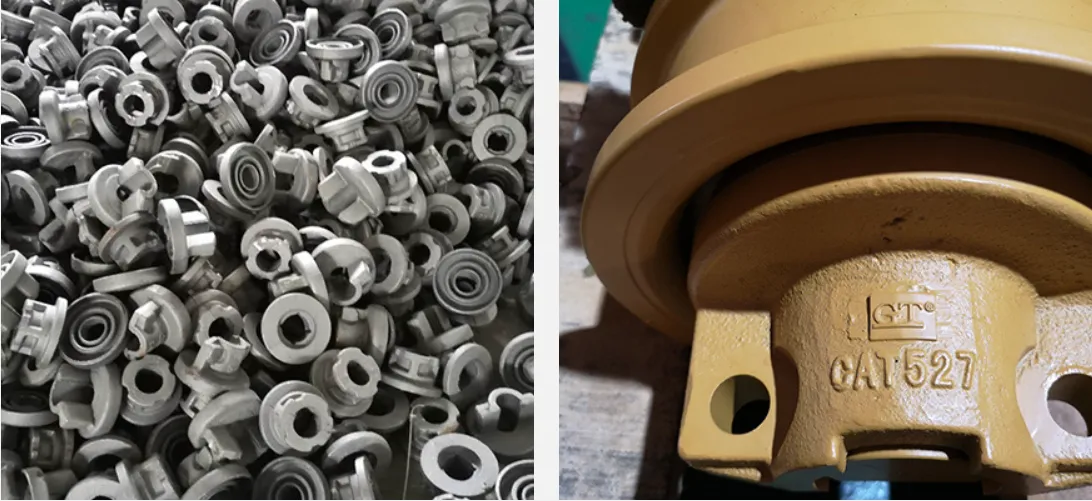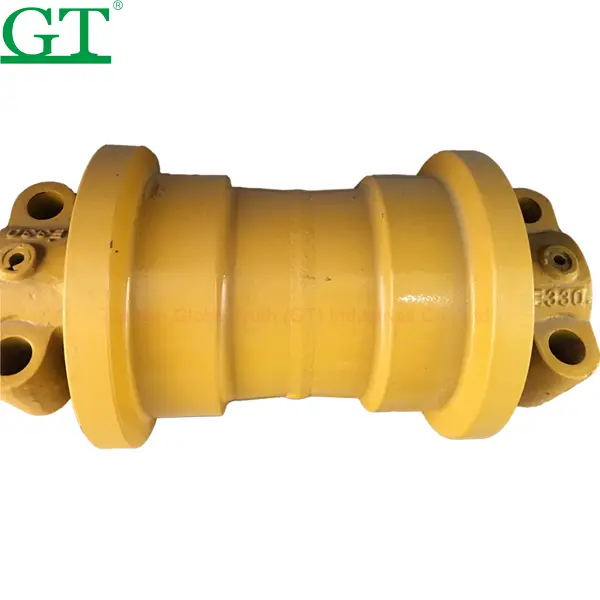The Science Behind Hardening Treatments for Enhanced Track Roller Performance
Why Wear Resistance Is Critical in Heavy-Duty Track Rollers
In abrasive environments like mining and construction, track rollers face sustained contact pressures exceeding 1,500 MPa. Wear resistance directly determines component lifespan—premature wear leads to costly downtime and undercarriage failures. A 2023 study found that improving surface hardness by 20% reduces track roller replacement frequency by 35% in quarry applications.
How Hardening Improves Surface Integrity and Load-Bearing Capacity
Hardening treatments create a martensitic steel layer (55–65 HRC) on the roller surface while preserving a ductile core (30–40 HRC). This dual-structure design enables:
- 40% higher crush resistance compared to untreated rollers
- 30% improvement in fatigue life under cyclic loading
- Surface compressive stresses that inhibit crack propagation
Optimizing Hardness with Tempering and Controlled Cooling Processes
Post-hardening tempering (150–300°C for 2–4 hours) reduces brittleness by converting 10–15% of martensite into tempered martensite. Combined with forced-air cooling at 25–50°C/s, this process achieves:
- Optimal hardness-toughness balance (55 HRC surface / 35 HRC core)
- Residual stress reduction of 40–60% compared to oil quenching
- <0.1% dimensional variation during phase transformation

Material Selection for Track Rollers: Alloy Steel vs. Carbon Steel in Demanding Applications
Comparative Strength and Toughness of 40CrMo, 42CrMo, and Manganese Steels
Materials used for track rollers must withstand incredible pressure conditions. When it comes to heavy duty applications, 40CrMo and 42CrMo alloy steels are the go-to choices because of their chromium molybdenum makeup. These alloys actually boost tensile strength anywhere from 15% to 20% compared to regular carbon steel, making them ideal for tough environments. On the other hand, manganese steels such as NM400 provide remarkable resistance against impacts, reaching hardness levels around 350 HB. However, there's a catch here too. While these materials handle impacts well, they tend to be harder to work with when welding is required. Let's take a closer look at how these different materials stack up against each other in practice.
| Property | Carbon Steel (1045) | 42CrMo Alloy Steel | Manganese Steel |
|---|---|---|---|
| Yield Strength | 450 MPa | 785 MPa | 1,100 MPa |
| Hardness (Post-Treatment) | 55 HRC | 62 HRC | 58 HBW |
| Impact Resistance | Moderate | High | Exceptional |
Manufacturing Excellence: Forging, Heat Treatment, and Precision Machining of Track Rollers
Forging the Wheel Body for Structural Integrity and Fatigue Resistance
Manufacturing starts with closed die forging using alloy steels such as 40Mn2 or 50Mn. The process works at temperatures above 1,100 degrees Celsius which helps align the metal grains and reduce those pesky internal voids we all want to avoid. When the grains are properly refined this way, the resulting material is actually about 12 percent denser than what comes out of casting methods. That makes a real difference when parts need to withstand repeated heavy loads, sometimes going beyond 25 tons without failing. Forged wheel bodies maintain very tight dimensional control around plus or minus 0.5 millimeters. These small but important tolerances help prevent stress points from forming, something that causes cracks in equipment used daily in quarries and mines across the country.
Pin Manufacturing: Achieving Core Toughness Through Quenching and Tempering
Track roller pins undergo oil quenching followed by high-temperature tempering (450–600°C) to balance surface hardness (58–62 HRC) with core ductility. This dual-phase structure prevents brittle fracture while maintaining a minimum Charpy impact toughness of 40 J at -20°C. Post-treatment ultrasonic testing verifies a <0.2% defect rate in critical load-bearing zones.
Surface Grinding and Final Machining for Dimensional Accuracy and Smooth Finish
CNC grinding machines achieve surface finishes of ₺0.8 μm Ra, minimizing friction heat during operation. Advanced horizontal milling systems ensure radial runout below 0.02 mm, which studies show reduces uneven wear by 37% in high-speed applications. Final inspection includes CMM validation of bore concentricity within 5 microns.
FAQ
What is the importance of wear resistance in track rollers?
Wear resistance is crucial in track rollers because it directly impacts component lifespan. High wear resistance reduces premature wear, minimizing costly downtime and preventing undercarriage failures in abrasive environments like mining and construction.
How do hardening treatments improve track roller performance?
Hardening treatments create a martensitic steel layer on the roller surface, enhancing crush resistance, fatigue life, and crack propagation inhibition. This results in improved surface integrity and greater load-bearing capacity.
Are laser-hardening techniques better than traditional methods?
Laser-hardening techniques offer precise control, minimizing part distortion and achieving greater hardness uniformity compared to traditional methods like induction hardening. This results in superior durability and wear resistance in track rollers.
Table of Contents
- The Science Behind Hardening Treatments for Enhanced Track Roller Performance
- Material Selection for Track Rollers: Alloy Steel vs. Carbon Steel in Demanding Applications
- Manufacturing Excellence: Forging, Heat Treatment, and Precision Machining of Track Rollers
- Forging the Wheel Body for Structural Integrity and Fatigue Resistance
- Pin Manufacturing: Achieving Core Toughness Through Quenching and Tempering
- Surface Grinding and Final Machining for Dimensional Accuracy and Smooth Finish
- FAQ




